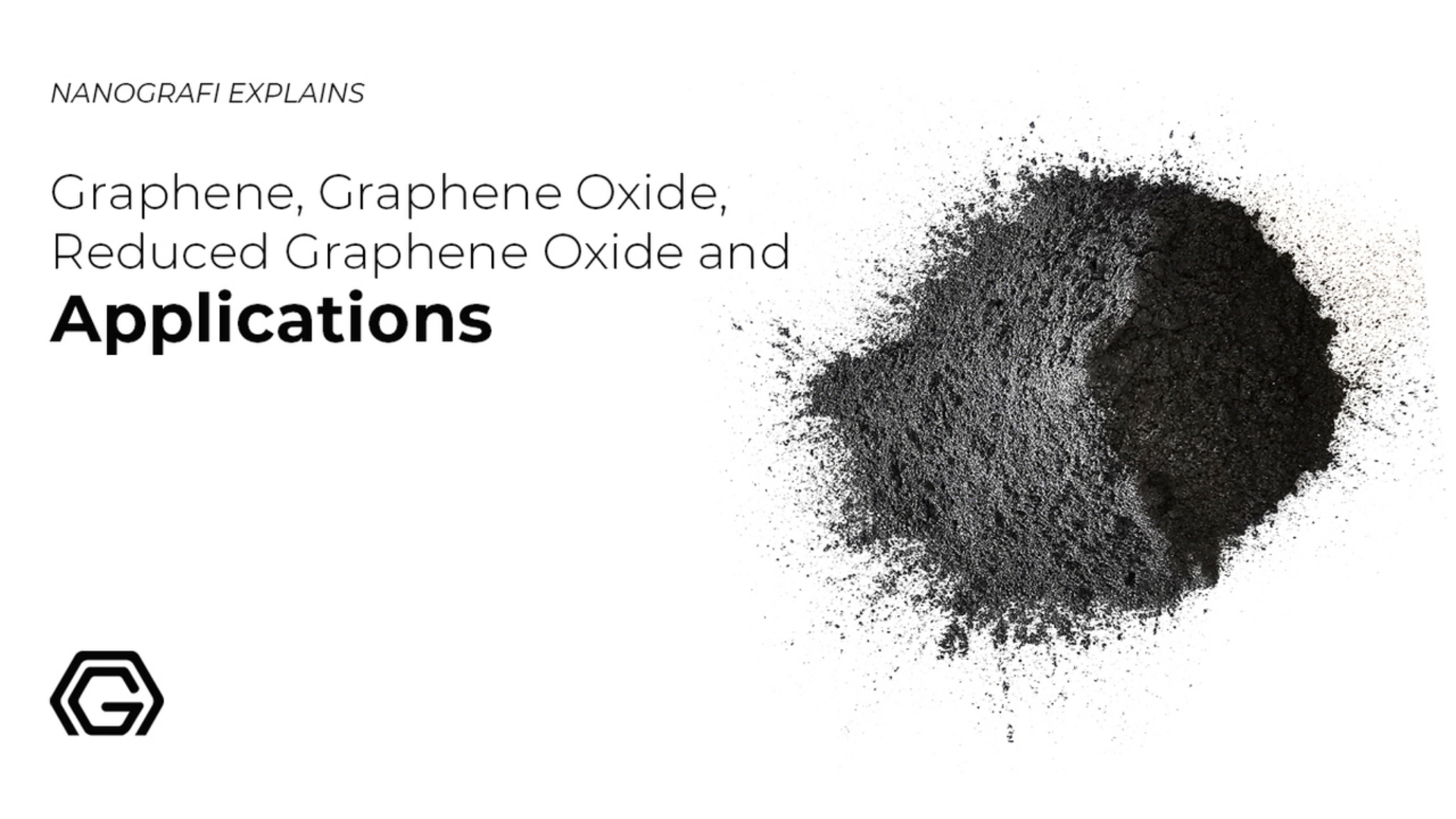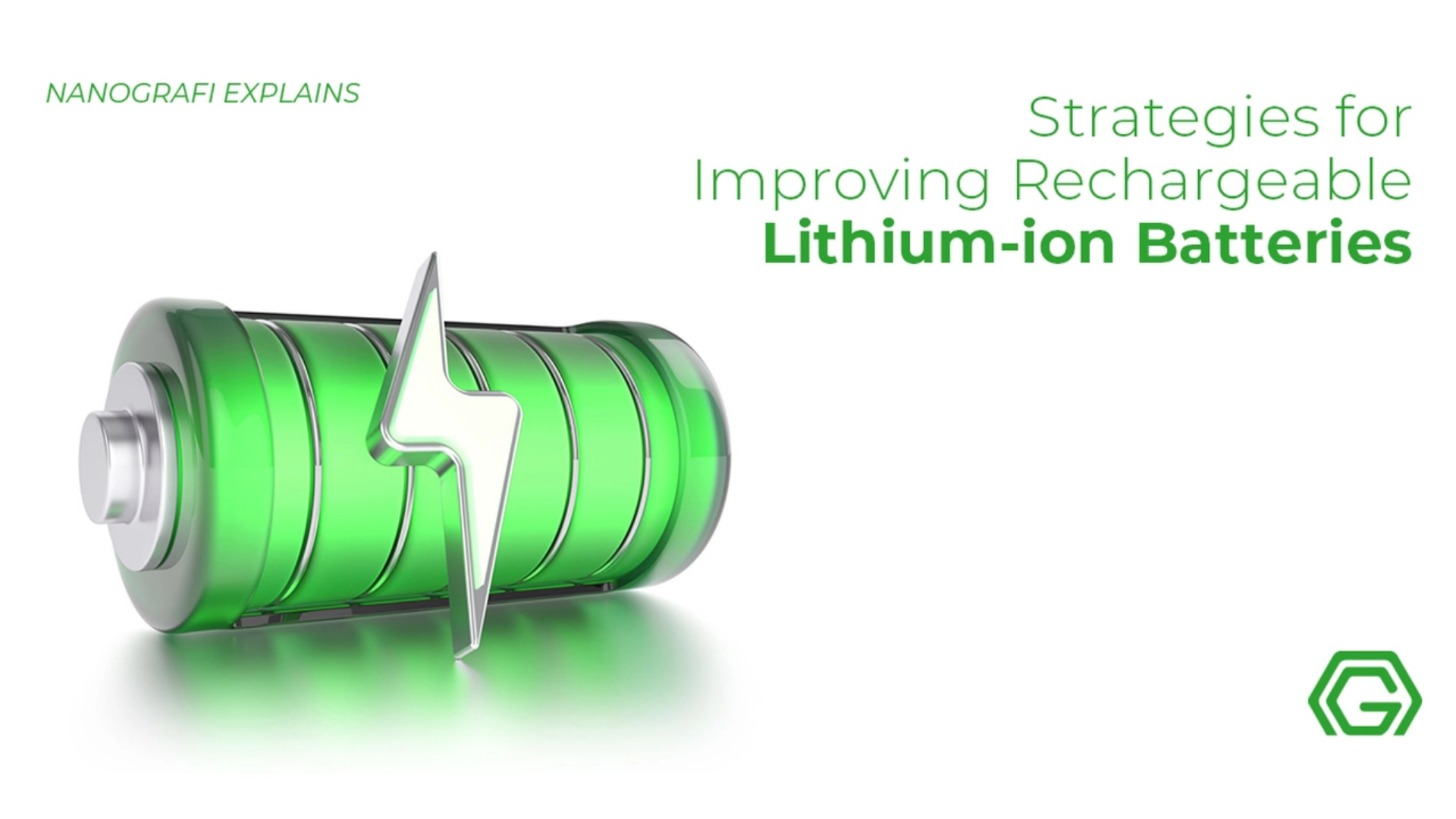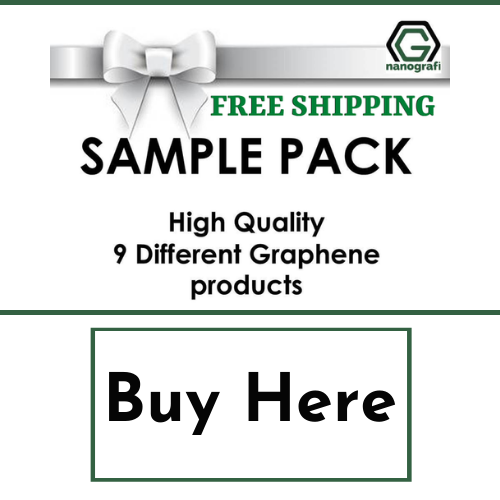Applications of Graphene in Metal-Air Batteries.
Graphene, as an allotrope of carbone, possesses properties and characteristics that are highly efficient and capable of setting benchmark in various industries
Though it is present in the form of tiny atoms combined, but when these atoms are combined, they hold a lot of strength as a result of which they are being produced at such a great rate and their applications as well have multiplied. Graphene is highly and cautiously being used in metal-air batteries as well because when graphene becomes a part of these batteries, their working mechanics expand, and ultimately their performance becomes outstanding owing to the excellent features and characteristics of graphene.
Introduction
Graphene is an arrangement of a 2-dimensional sheet of carbon atoms in a chicken-wire pattern. It is an extremely fascinating and attractive material. It possesses various exciting and remarkable characteristics like electrical and thermal conductivity, mechanical strength, intriguing optical characteristics, and more. Graphene's comparatively high price is the only problem at the moment, other than that, it has already gained the attention of vigorous R&D.
Excellent structure
The structure of graphene is excellent whereas its discovery can seem easy and simple. A 2-D crystalline structure is possessed by graphene. The flat layer of atoms contains carbon's hexagonal rings, giving graphene a structure like that of a 'honeycomb'. 0.33 nanometers is the approximate thickness of the layer itself. Before graphene was discovered, no one believed in the existence of 2-dimensional molecules because of thermal instability.
Thinnest compound
A thickness of one atom, graphene is the thinnest compound that's known, it is also the lightest material (0.77 milligrams is the approximate weight of 1 square meter). With 1 TPa-150,000,000 psi of Young Modulus and 130 GPa of tensile strength, graphene is the strongest compound that's ever been discovered. As compared to steel, it is 100 to 300 times stronger. At room temperature, graphene is the best-known conductor of electricity and heat (at (4.84±0.44) × 10^3 to (5.30±0.48) × 10^3 Wm−1K−1). According to studies, graphene shows electron mobility at more than 200,000 cm2.v-1.s-1 of values. Graphene has other various notable characteristics, one of it is light’s uniform absorption across the spectrum’s near-infrared and visible parts (πα ≈ 2.3%), and it is also potentially suitable for being utilized in spin transport.
Carbon’s Abundance
One might find it astonishing that the human body has carbon as the second most abundant mass inside whereas by mass, this element is 4th most abundant in the universe, and it falls after hydrogen, helium, and oxygen. This is the reason carbon is the chemical basis for all life present on the Earth, which gives the graphene potential to be a sustainable, eco-friendly solution for approximately infinite applications. Applications in various scientific disciplines have increased since graphene has been discovered (the mechanical obtainment to be more accurate). Huge gains have been specifically made in energy generation and storage, ultra-wide bandwidth photodetectors, magnetic, chemical, and biosensors, and high-frequency electronics.
Graphene’s characteristics
Electronic characteristics
Graphene is a zero-overlap semimetal with extremely high electrical conductivity (with both electrons and holes as the charge carriers). This is another useful characteristic of graphene. 6 electrons in Total are possessed by the carbon atoms; in the outer shell, there are 4 electrons whereas, in the inner shell, there are 2. Pi (π) electrons are the name for these highly-mobile electrons and their location is below and above the graphene sheet. These pi (π) orbitals overlap and aid in improving graphene's carbon to carbon bonds. These pi orbitals' anti-bonding and bonding fundamentally dictate the graphene's electronic characteristics (the conduction and valance bands).
Optical characteristics
Another interesting and exciting characteristic of graphene is its capability to absorb a large 2.3 percent of white light, particularly keeping in mind that its thickness is only 1 atom. It is because of the electronic characteristics of graphene that the electrons function like massless charge carriers with extremely high mobility. It was proved some years ago that the Fine Structure Constant determines the amount of white light that is absorbed, instead of being dictated by the material specifics.
Mechanical characteristics
The inherent strength of graphene is one of its other characteristics that stands out. Other than being remarkably strong, graphene is extremely light too at 0.77milligrams per square meter (to compare, a paper's square meter is roughly a thousand times heavier). There's a famous saying that goes around that graphene's single sheet (of the thickness of only 1 atom), is enough in size for covering a complete total field but its weight wouldn't be more than 1 single gram itself.
What are the current usages for Graphene?
Graphene possesses numerous applications and the reason for that is the characteristics of graphene. The market has been introduced with many graphene products since 15 years of it being isolated for the first time, and every year, graphene expands into new areas.
To get more information about applications of graphene,
you can read our blog post here.
Graphene-based electrodes for the flexible multivalent metal-ion batteries
Multivalent metal's low cost and abundance are the main reason for the success of flexible multivalent metal-ion batteries like Al and Zn-ion. A huge amount of attractions has been gained by the zinc-ion batteries (ZIBs) specifically with their easiness to scale up, high safety, and benefits of two-electron redox. In ZIBs, the dominant cathode material is the NaV3O8∙1.5H2O (NVO) but because of NVO’s poor conductivity, its theoretical capacity (486 mAh g−1) has been way more as compared to its reported capacity. The vacuum filtration method was used by Wan et al in introducing NVO on the highly conductive graphene and he attained rGO/NVO composite film with remarkable flexibility. At 100 mA g−1, 410 mAh g−1 of high capacity was delivered by the graphene-based composite films and even under various bending states, flexible ZIBs’ discharge curves stayed stable.
Graphene-based electrodes for the flexible Li-air batteries
A flexible GO paper was utilized for the first time by Cetinkaya et al. for the Li-air batteries as the cathode. Enough porosity for O2 diffusion was provided by the vacuum-filtered GO paper, therefore enhancing the efficiency of Li2O2’s decomposition and formation. After 10 cycles of it being used for the Li-air battery as the cathode, 612 mAh g−1 of discharge capacity and 585 mAh g−1 of charge capacity were delivered by it. Although, the device's life cycle and capacity didn't reach the demand for practical usage because of the GO paper's poor conductivity. Conductive graphene nanoplatelets (GNPs) were introduced by Kang's group into GO for the preparation of the flexible GNP/GO films by using the vacuum-assisted filtration method. Disordered and highly wrinkled morphology was displayed by the attained paper-like film.
To get more information about improving rechargeable Lithium-ion Batteries,
you can read our other blog post here.
Graphene-based electrodes for the flexible metal-air batteries
Recently, a huge amount of attention has been gained by the metal-air batteries specifically in the zinc-air and lithium-air because of the comparatively high energy density. It is important to fabricate flexible electrodes for attaining the flexible metal-air batteries. The flexible air cathode's search is way urgent as the thin metal foil (zinc or lithium foil) can be utilized for the flexible metal-air battery as the anode and it displays a particular degree of flexibility. Remarkable air permeability should be possessed by the cathode as the metal-air batteries' efficient operations depend on the oxygen-evolution reaction (OER) and oxygen-reduction reaction (ORR). Although, the specific capacity decreases because various flexible substrates possess poor electrochemical catalytic activities and low porosity.
Rate performances
Divalent cations’ slow diffusion in the cathode is unfortunately still the reason for most ZIBs’ unsatisfactory rate performance. A graphene-based flexible ZIB was made by the Fan’s group for attaining high-rate ZIBs. They grew novel layered zinc orthovanadate (ZOV) on the flexible graphene form and it functioned as the cathode. Also, they utilized the porous graphene foam for supporting Zn array mode. Remarkable flexibility and mechanical stability were consequently shown by both the graphene-based anode and cathode, where after the repeated bending, no active materials were seen being peeled off from the graphene substrate. Long cycle life (2000 cycles) and 50C of ultrahigh rate performance (discharge in 60 seconds) was delivered by the attained flexible Zn-ion battery.
Electrical conductivity
In addition, it displayed flexibility and 164 S cm-1 of good electrical conductivity, therefore enabling it for being utilized directly as a freestanding cathode without utilizing any binders and conducting additives. At 100 mA g−1 of current density, 9760 mAh g−1 of high full discharge capacity was delivered by the final device because of the advantages of high surface area and good conductivity.
Alternatively, the electrochemical performance could be enhanced further by the introduction of catalysts towards OER and ORR. A CeO2-graphene foam flexible composite was developed by Jiang et al. for the Li-air batteries. Here, hydrothermal treatment was done for growing CeO2 microspheres on the 3D graphene foam. Good flexibility was displayed by the graphene-based composite cathode and it could be folded easily. Rapid O2 diffusion occurred because of the porous framework and improved catalytic activity was displayed by the CeO2 toward ORR because of the contributions of the porous framework. Flexible Li-air batteries can steadily cycle for 80 times after folding up to 1000 times because of the advantages from these merits.
Graphene-based electrodes for the flexible sodium-ion batteries
Developing their alternatives is still important because of the limited lithium resources while the commercialization of LIBs has been completed. Due to the sodium resources being cheap and broadly available, an extensive amount of interest has been gained by sodium-ion batteries (SIBs).
Graphene-based electrodes for the flexible Zn-air batteries
In comparison with the flexible lithium-air batteries, the flexible Zn-air batteries are more attractive because of their merits of environmental friendliness and abundant resources. Just like lithium-air batteries’ cathodes, excellent ORR/OER electrocatalytic activity, high electrical conductivity, air permeability, and remarkable flexibility should be possessed by the cathodes of zinc-air batteries. Due to risks of electrolyte leakage and evaporation, utilization of flexible zinc-air batteries is significantly limited by using fluidic liquid electrolytes. It is because of their inherent reliability and safety that the flexible all-solid-state Zn-air batteries are superior to flexible electronic devices.
Usage of pure graphene films
Pure graphene films can be naturally utilized for SIBs as flexible electrodes. A facile filtration method with a subsequent annealing treatment was used by Song's group for developing a porous graphene film and defects and extra edges were produced in the graphene film by using ferric nitrate for offering more electrochemically active sites for high capacity. As a result, when it is utilized as the SIBs anode, a high capacity of 111 mAh g-1 was delivered by the porous graphene film when it is utilized as the SIBs anode even after 1000 cycles at 1000 mA g−1.
Doping of heteroatoms
Alternatively, the electrochemical characteristics of graphene films can also be enhanced by doping the heteroatoms into the graphene films. Thiourea was first dissolved into GO’s aqueous dispersion by Deng et al. to develop a sulfur-doped flexible graphene film and a gelation process was subsequently initiated. At 100 mA g−1, 377 mAh g-1 of high capacity is possessed by the sulfur-doped graphene film, way higher as compared to the capacity of the pristine graphene film which at 100 mA g−1 is around 100 mAh g−1. Other than a single element doped graphene, enhanced electrochemical performance was displayed by the co-doped graphene with the binary elements. A solvothermal process was done by An et al. to make N and F co-doped graphene paper.
Nitrogen-doped nanosheets
They grew the atomically thin layer-by-layer mesoporous Co3O4 on the nitrogen-doped rGO (N-rGO) nanosheets as the bifunctional catalyst and high activity was displayed by the composite because of the strong synergistic effect between N-rGO and atomically thin Co3O4 and large surface area. A zinc wire was used as an anode, gel polymer as an electrolyte, and CoOx/N-rGO composite as an air cathode, to fabricate a fiber-shaped all-solid-state zinc-air battery. 36.1 mWh cm−3 of high volumetric energy density was also displayed by it. Under numerous types of extreme deformations like knotting, and bending, the achieved flexible Zn-air battery can perform stably, and they are integrated into the clothes for powering numerous electronic devices. They knitted 3 fiber-shaped zinc-air batteries sets (3 in-series zinc-air batteries are contained by each set) in a cloth and that could be enough to charge the iPhone 4S.
Recent advancements in flexible batteries
There has been a review of the recent advancements in the graphene-based electrodes for numerous flexible batteries, like metal-air batteries (Zn-air, Li batteries), lithium-sulfur batteries, and metal-ion batteries (K, Na, Li-ion batteries). Graphene-based electrodes function in these devices as a flexible substrate for supporting electrochemically active materials of nanorods, nanospheres, and amorphous nanoparticles, where they will guarantee the flexible batteries' high capacity and enhance the active material's conductivity. Moreover, good enough space is provided by the porous graphene structures for accommodating the active material's over expansion, therefore achieving good cyclic stability.
Applications of metal-air batteries
Using Metal air battery for the treatment of heavy metals in the water
Arsenic is strongly toxic and is a heavy metal. Normally, in nature, it is in pentavalent and trivalent form. Serious damage will be caused to the human body if the drinking water (>0,01 mg/L) contains arsenic in excessive amounts. Thus, effective removal of excess arsenic from the water is extremely significant. Currently, arsenic-removing methods include sedimentation method, coagulation, biological treatment method, membrane separation method, absorption method, etc. Some of the above methods are expensive, some need longer processing time, and some need related processing facilities. Treatment of arsenic in water by using a metal-air battery device is a novel method. Electricity is simultaneously produced by this reaction and it can’t remove arsenic effectively from the wastewater. Utilizing a metal-air battery device to process gives good processing results and needs only simple equipment too.
Utilization of the Metal air battery for collecting substances in water
In water, coagulants or electrolysis is added to collect some substances for forming precipitation, and then separate those substances from the water. Not only do these methods enhance the quality of the water, but they also obtain the goal of utilizing particular substances again. This method also completes the demands of sustainable development of environmental and economic protection. Some researchers tried utilizing the metal-air battery for collecting the substances in the water. In water, an element that is commonly found is phosphorus. If the standard is exceeded by the content, it will result in a series of problems like water’s eutrophication.
Phosphorus and magnesium salt’s combination
Struvite (MgNH4PO4) can be formed by combining excessive phosphorus with the magnesium salt in water, and struvite is then collected. A magnesium-air battery was made with air cathode and magnesium anode by Dae Hwan Lim et al., and he utilized the phosphorus-containing wastewater as a battery electrolyte for the collection of phosphorus in the water. According to the study, when there is a low concentration of phosphorus in the water, NaCl's addition in the electrolyte can have a higher collection efficiency too. Also, a passivation layer made up of struvite is produced on the magnesium anode's surface when there is a gradual increase in the concentration of the phosphorus, leading to a decrease in the magnesium anode's dissolution rate. Magnesium anode's low dissolution rate is the reason for the reduced phosphorus collection rate.
Enhancement in performance
After NaCl's addition to the electrolyte, the phosphorus collection efficiency and battery's power generation performance are all enhanced with the NaCl dosage's increase, which is mostly because of the magnesium anode's surface passivation layer being destroyed by Cl-. Although, a passivation layer is produced on the magnesium anode's surface when the concentration of phosphorus in the water is extremely high (more than 0.05 mol/L), further greatly reducing the collection efficiency. The addition of Cl- will no longer enhance the magnesium anode's surface condition. Thus, it uses a magnesium-air battery at an appropriate concentration of phosphorus for the collecting struvite.
Treatment of production and domestic wastewater by the metal-air battery
High ammonia nitrogen, high chroma, high COD, and other characteristics are possessed by aquaculture wastewater. Serious pollution problems will be caused if the wastewater is discharged directly into the water. In China, there is a wide distribution of the aquaculture industry into numerous rural areas. In most villages, the treatment facilities are not good enough. Various aquaculture wastewaters are discharged without treatment in the water, resulting in local water's serious pollution. Currently, metal-air batteries have been utilized by some people for studying the aquaculture wastewater's treatment effect, and some of the results have been obtained.
Iron air battery' and aluminum-air battery's construction
Swine wastewater was treated by Zhao et al. by making an iron-air battery and aluminum-air battery. They studied swine wastewater’s electricity production performance and treatment effect by setting different metal anode, different pH values, and different conductivity (adding NaCl’s various concentrations can adjust this). According to the findings of the study, the electrical performance of the battery will be better if the conductivity is higher. Different values of pH influence the discharge of the device, but it's a slow impact. They also used a bimetal electrode to create an air battery while exploring the conventional influencing factors. The best performance was made by the battery with a double metal anode configuration. In the experiment, there was a study on the bimetallic anode's metal-air battery. According to the findings, the best performance was of the battery with aluminum-iron double anode. The experimental device subsequently treats the swine wastewater.
Utilization of two methods
They utilized two methods. In one method, wastewater was added as an electrolyte into the experimental device for treatment purposes. In the other method, the solution is added to the device into the wastewater for the treatment as a coagulant.
Conclusion
Metal air batteries are extremely beneficial for today's world as they are serving various purposes in industries and human lives as well. However, the incorporation of graphene in these batteries has massively increased their production and applications, most of which are said to be found in the area of treatment of water. This is due to the combined excellent features of graphene and metal-air batteries.
To get more information, you can visit our Blografi.
References
https://www.e3s-conferences.org/articles/e3sconf/pdf/2019/62/e3sconf_icbte2019_06035.pdf
https://www.sciencedirect.com/science/article/abs/pii/S0920586122000049
https://iopscience.iop.org/article/10.1088/2043-6262/7/2/023002/pdf
https://springerplus.springeropen.com/articles/10.1186/2193-1801-3-585
https://onlinelibrary.wiley.com/doi/full/10.1002/inf2.12039
https://www.androidauthority.com/graphene-batteries-explained-1070096/
Recent Posts
-
Advanced Materials for Unmanned Aerial Vehicle (UAV) Protection Against Laser
Consider a UAV on a critical mission, rendered inoperative by a sudden laser attack. With the increa …26th Jul 2024 -
Simulation and Modeling of Material Properties
Our world is composed of a dazzling array of materials, each with its own unique properties that dic …19th Jul 2024 -
Advanced Coatings for Superior Corrosion and Wear Resistance
Corrosion and wear pose significant challenges across various industries, leading to substantial eco …12th Jul 2024









